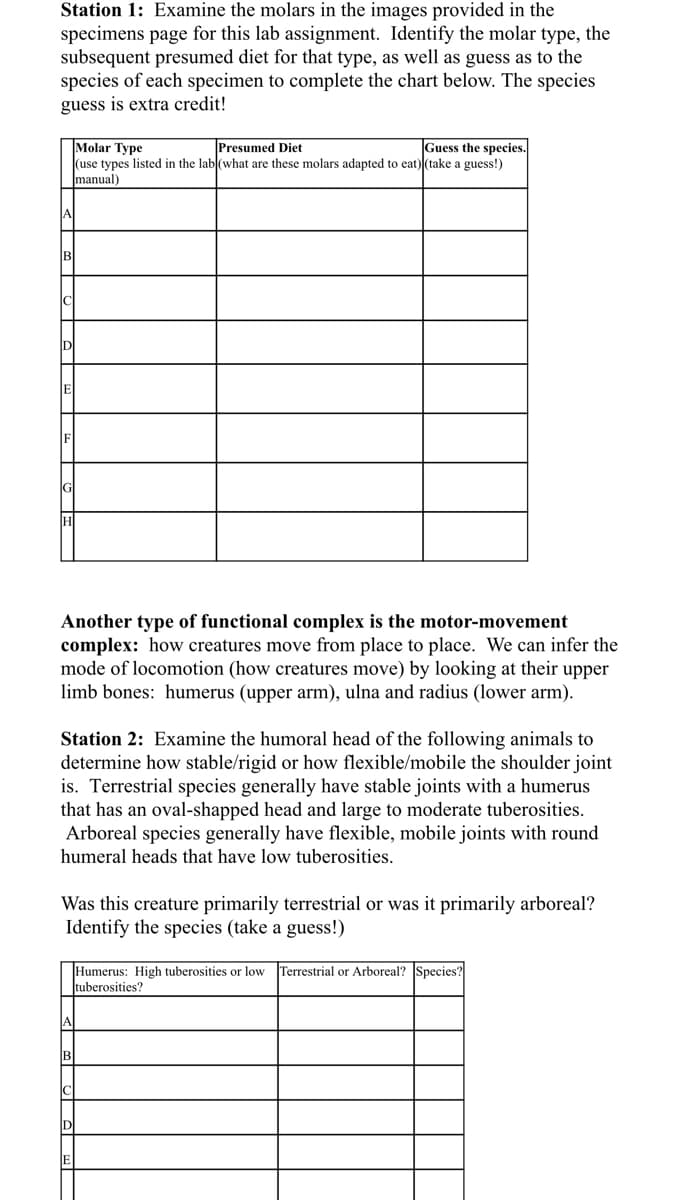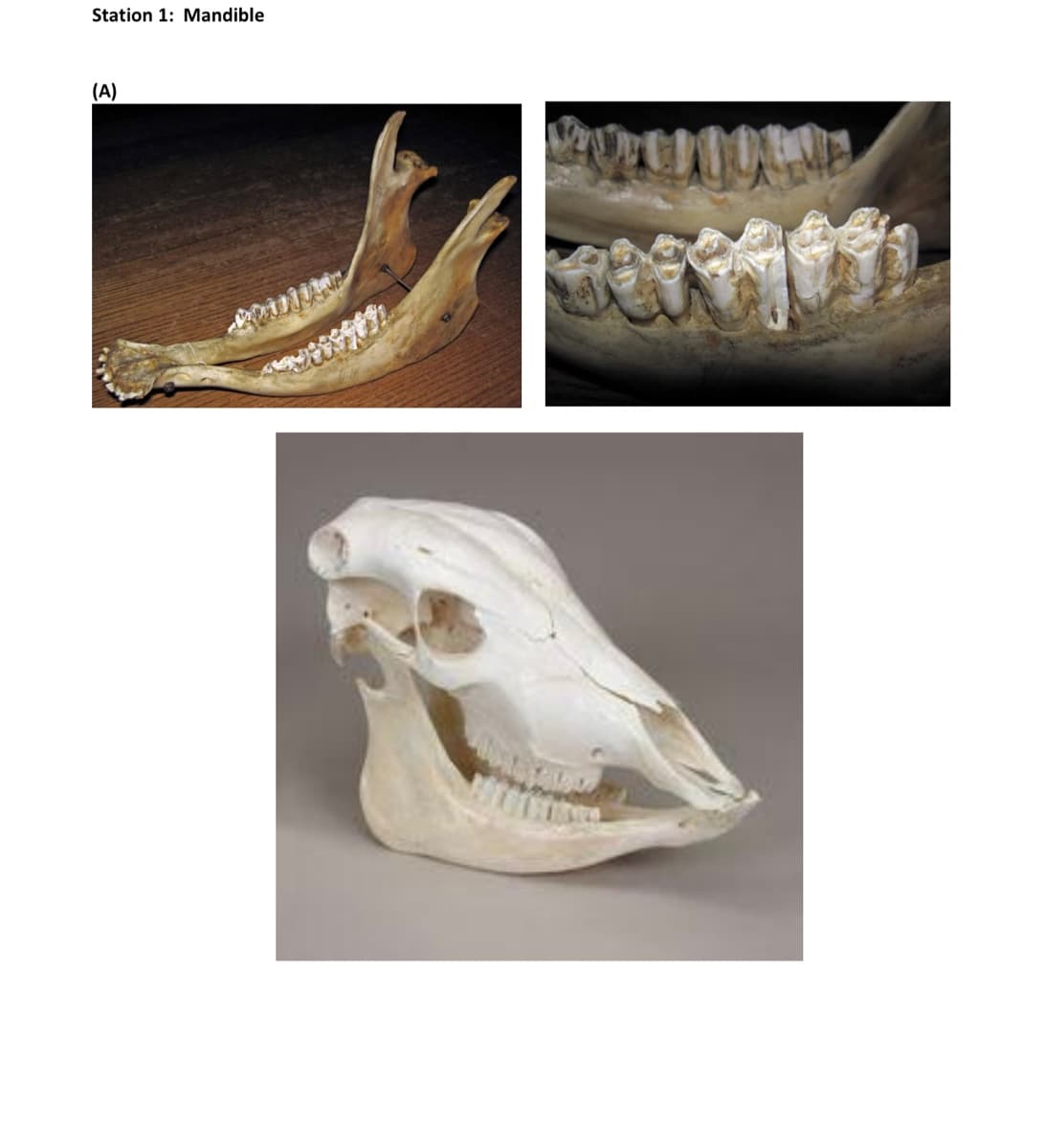Station 1: Examine the molars in the images provided in the specimens page for this lab assignment. Identify the molar type, the subsequent presumed diet for that type, as well as guess as to the species of each specimen to complete the chart below. The species guess is extra credit!
Station 1: Examine the molars in the images provided in the specimens page for this lab assignment. Identify the molar type, the subsequent presumed diet for that type, as well as guess as to the species of each specimen to complete the chart below. The species guess is extra credit!
Chapter2: Aquatic Plants And Animals
Section: Chapter Questions
Problem 4KA
Related questions
Question

Transcribed Image Text:Station 1: Examine the molars in the images provided in the
specimens page for this lab assignment. Identify the molar type, the
subsequent presumed diet for that type, as well as guess as to the
species of each specimen to complete the chart below. The species
guess is extra credit!
B
D
E
Another type of functional complex is the motor-movement
complex: how creatures move from place to place. We can infer the
mode of locomotion (how creatures move) by looking at their upper
limb bones: humerus (upper arm), ulna and radius (lower arm).
Station 2: Examine the humoral head of the following animals to
determine how stable/rigid or how flexible/mobile the shoulder joint
is. Terrestrial species generally have stable joints with a humerus
that has an oval-shapped head and large to moderate tuberosities.
Arboreal species generally have flexible, mobile joints with round
humeral heads that have low tuberosities.
Molar Type
Presumed Diet
Guess the species.
(use types listed in the lab (what are these molars adapted to eat) (take a guess!)
manual)
Was this creature primarily terrestrial or was it primarily arboreal?
Identify the species (take a guess!)
A
B
JC
Humerus: High tuberosities or low Terrestrial or Arboreal? Species?
tuberosities?

Transcribed Image Text:Station 1: Mandible
(A)
Expert Solution
This question has been solved!
Explore an expertly crafted, step-by-step solution for a thorough understanding of key concepts.
This is a popular solution!
Trending now
This is a popular solution!
Step by step
Solved in 2 steps

Knowledge Booster
Learn more about
Need a deep-dive on the concept behind this application? Look no further. Learn more about this topic, biology and related others by exploring similar questions and additional content below.Recommended textbooks for you



